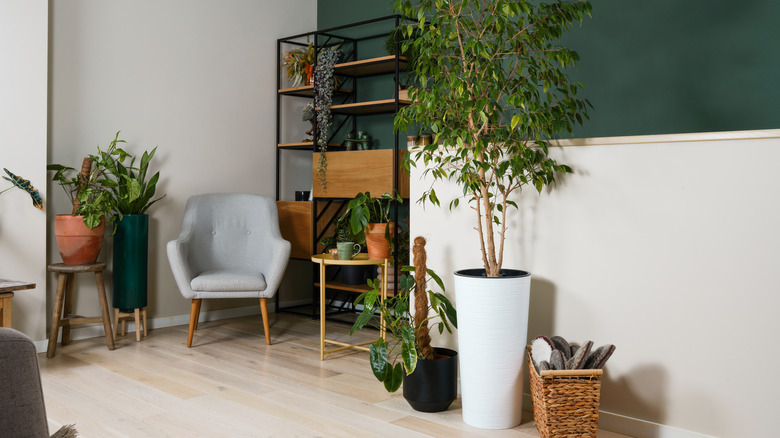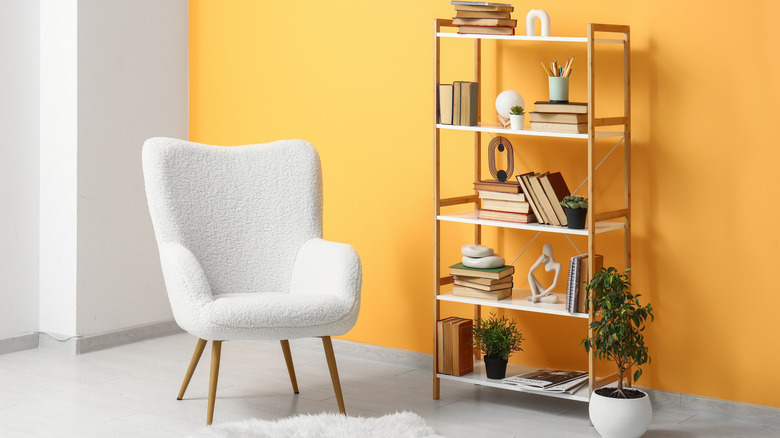What Is The Difference Between An Étagère Shelf And A Bookcase?
If you're a book lover or just looking for a stylish way to display your ever-growing TBR, you might start shopping online for a new option for your space. There's no shortage of bookshelves for sale out there, but have you ever seen something called an étagère shelf in your search? You may think it's just a word for a fancy bookcase, but the terms aren't interchangeable. While both are furniture pieces that can store various objects, including books, there are distinct design differences between the two in terms of capacity, weight limit, and shelving materials. A bookcase will often feature a back panel, while an étagère will not.
The word étagère (pronounced ay-tah-ZHAIR) often appears next to bookcases in catalogs online, but they aren't the same thing. If you're all about showing your bookshelf wealth on TikTok, you're likely picking up a bookcase that has a higher weight capacity than an étagère shelf. While a beautiful decorative choice, an étagère is counterintuitive to displaying your books, especially if you have more than a few. Piling a bunch of heavy books on the latter isn't ideal, because it might buckle from the pressure of all of those volumes. Then you might be stuck with a broken étagère and a big mess to clean up. Even scarier is the thought that this mishap could dent the spine or rip the cover of your beloved texts. To avoid a reader's worst nightmare and give your books a good "shelf life," it pays to know what étagères are, what material they feature, plus how and where you can use them.
What exactly is an étagère?
Étagère originates from the Middle French term étager, meaning "to stage, or lay out in tiers." They reigned in popularity in mid-18th-century France among Versailles' halls. It's a decorative piece used to store knick-knacks, vases, and other objets d'art. In other words, they put the curios you love on display. Sometimes, you may even see them referred to as a "whatnot." An étagère can be made of a variety of materials, including metal or rattan. They run the gamut of styles, from industrial to modern to French country. A popular combination for some models is a metal frame with glass shelves, though there are all-wood or even rattan versions. Like their vintage counterparts, they might have more elaborate designs than traditional bookcases, with curved elements, varying shelf sizes, and open sides.
When decorating these shelves, the focus is on a curated look where each piece shines. Without a back panel, there's a balance of negative and filled space, while letting in adjacent natural light. If you do include books on your étagère, choose only a few small volumes to add height to a sculpture or another decorative object. You can use them in any room throughout your home, just keep in mind that they function as a decorative display of lightweight objects. They can be an easy way to add a shelf to your bathroom for storing towels and toilet paper, or even in a hallway to display framed family pictures. Perhaps they are most effective when used as a room divider, as their open, airy design lets you create and define a space without blocking light.

